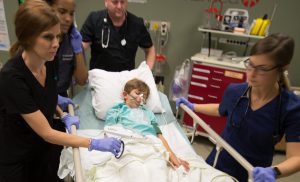
An 8-year old male with no significant past medical history presented to our Emergency Department (ED) with cough, fever, and shortness of breath. Symptoms began earlier that day and the parents elected to send him to the hospital due to breathing difficulty.
Upon arrival to the ED, the patient was pallor, dehydrated, hypotensive and tachypneic, qualifying him for sepsis protocol. During the initial assessment he was also noted to have labored substernal, intercostal, and accessory retractions with a pulse ox of 86%. Lung sounds were coarse and crackly and he was unable to speak more than one word at a time. Capillary refill on exam was delayed ~4 seconds.
In accordance with the hospital’s pediatric sepsis guidelines, an IV was placed and a rapid fluid bolus administered. In this case, the LifeFlow® infuser was used due to its speed and control. In order to titrate the fluid resuscitation to the patient, careful patient assessments were performed in between each 20mL/kg bolus to evaluate patient response. After each bolus, the patient’s blood pressure increased. Following completion of the third LifeFlow fluid bolus the patient’s pallor reversed, heart rate decreased, retractions decreased, capillary refill time decreased to 3 seconds, and blood pressure increased to 110/60. Patient also became more alert, interactive and able to speak in full sentences. The parents commented on the quick transformation following the fluid boluses.
Once the patient was stabilized, he was admitted to the PICU for treatment of pneumonia. The ability to provide multiple rapid, controlled fluid boluses allowed our team to quickly stabilize this young patient who may have otherwise rapidly deteriorated and spent a longer time in the ED, potentially consuming more resources and time.

